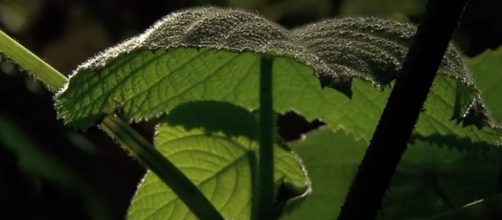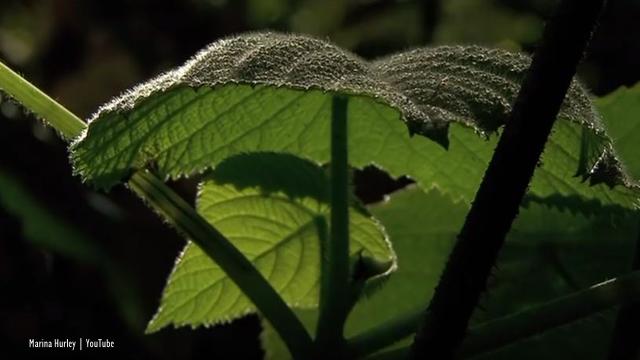Gympie-Gympie is a friendly sounding name for a plant in Australia. The shrub occurs in the forest areas of Queensland near the west coast of the country, and further south in New South Wales. Listed as endangered, there probably are some people who wish it would disappear altogether as it's not at all friendly. Also known as the "suicide plant," horrific tales of the power of the venomous plant to derange victims arose over the years. It's not all folktales either, as researchers studying the shrub can testify.
Researcher happy to stop studying the suicide plant
Researcher and botanist, Marina Hurley, described the pain of touching one of the leaves as excruciating. She likened it to "being burned by hot acid and electrocuted at the same time," Curiosity.com reported. Australian Geographic expanded on her experience, citing her as saying being stung by the hairs on the green heart-shaped leaves or stem is, "the worst kind of pain you can imagine." The poison in the hairs is so strong, it kills the surrounding vegetation in the forest. When people handle it and get stung, they can develop serious allergic reactions. Marina got such severe hives and itching that her medical professional suggested she stop studying it.
She noted that she was happy to comply with the doctor's orders.
Horse went mad after Gympie-Gympie stings
The first known death after contact with the stinging plant was that of a horse. Australian Geographic recalled that a road surveyor in North Queensland in 1866 watched his horse go mad with pain after it was stung. It died after two hours of intense agony.
They noted there are other local tales of animals leaping over cliffs to their death to escape the pain.
The soldier that committed suicide from intense pain
Gizmodo reported that during World War 2 there were a number of encounters between soldiers and the unfriendly plant. One was strapped to a gurney and he screamed from pain for three weeks.
Cyril Bromley described it as being "mad as a cut snake." He also related a story of an officer who used the leaves as toilet paper. The intense pain was so extreme, he committed suicide. Another Botanist, Ernie Rider, can attest to the extremity of it. It took him two years to get over the pain it caused when taking a shower.
Gympie-Gympie the biological warfare weapon
Gympie Gympie got such a bad reputation during the war days, that samples were collected and sent to a facility that worked on biological warfare weapons. The Porton Down chemical defense laboratory got a professor of Pathology to send over the samples to the British Army. He knew they developed chemical weapons, but as nobody ever heard anything more, possibly they decided against using it.
The perfect pain plant has some animal fans
Oddly enough, the pain plant does have some fans. It produces fruit which is in line with other fruit plants that rely on animals to scatter their seeds. While humans, dogs, and horses cannot tolerate the poison hairs, certain Australian birds and mammals are not affected by them. One animal, a small, kangaroo-type of marsupial eats the berries with relish. Known as the Pademelon, the furry animal snacks on them with no ill effects from Gympie-Gympie, the suicide plant that deranges human victims with extreme fire-like pain.
Stay in mum's pouch for as long as you can, little pademelon. It's a rough world out there. #WildOz pic.twitter.com/2rha27T9wn
— Bronwen Scott (@Snailseyeview) October 7, 2018


